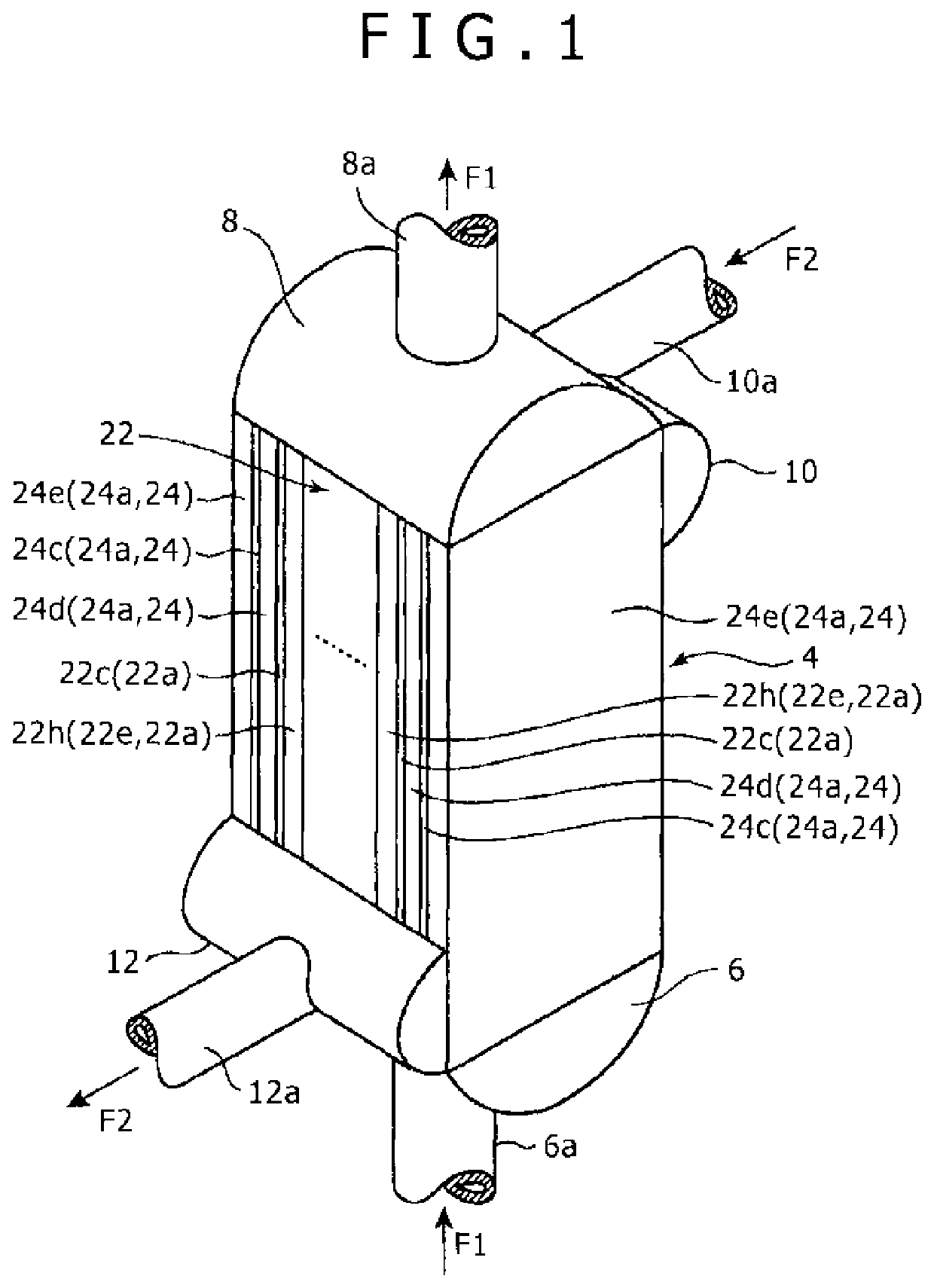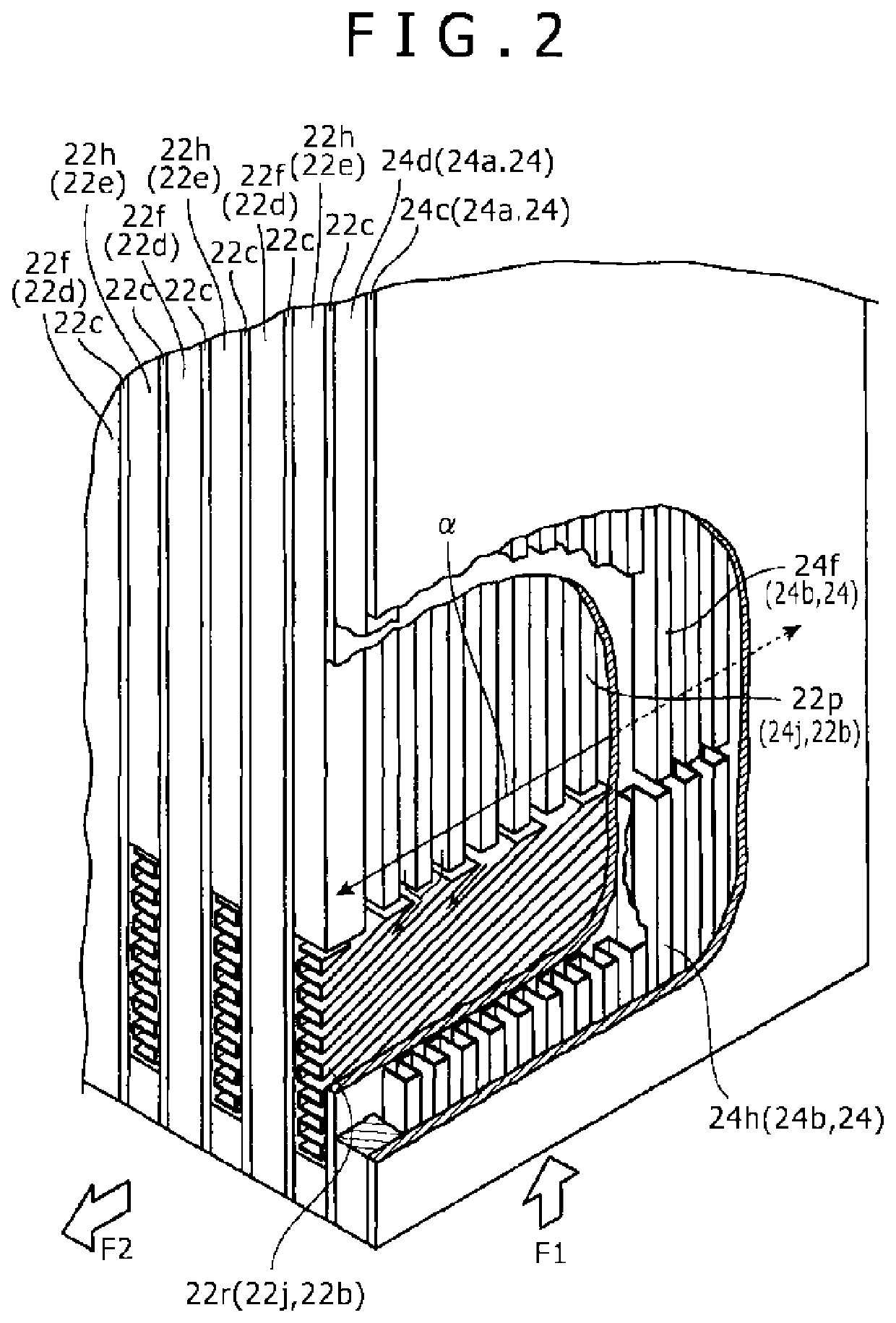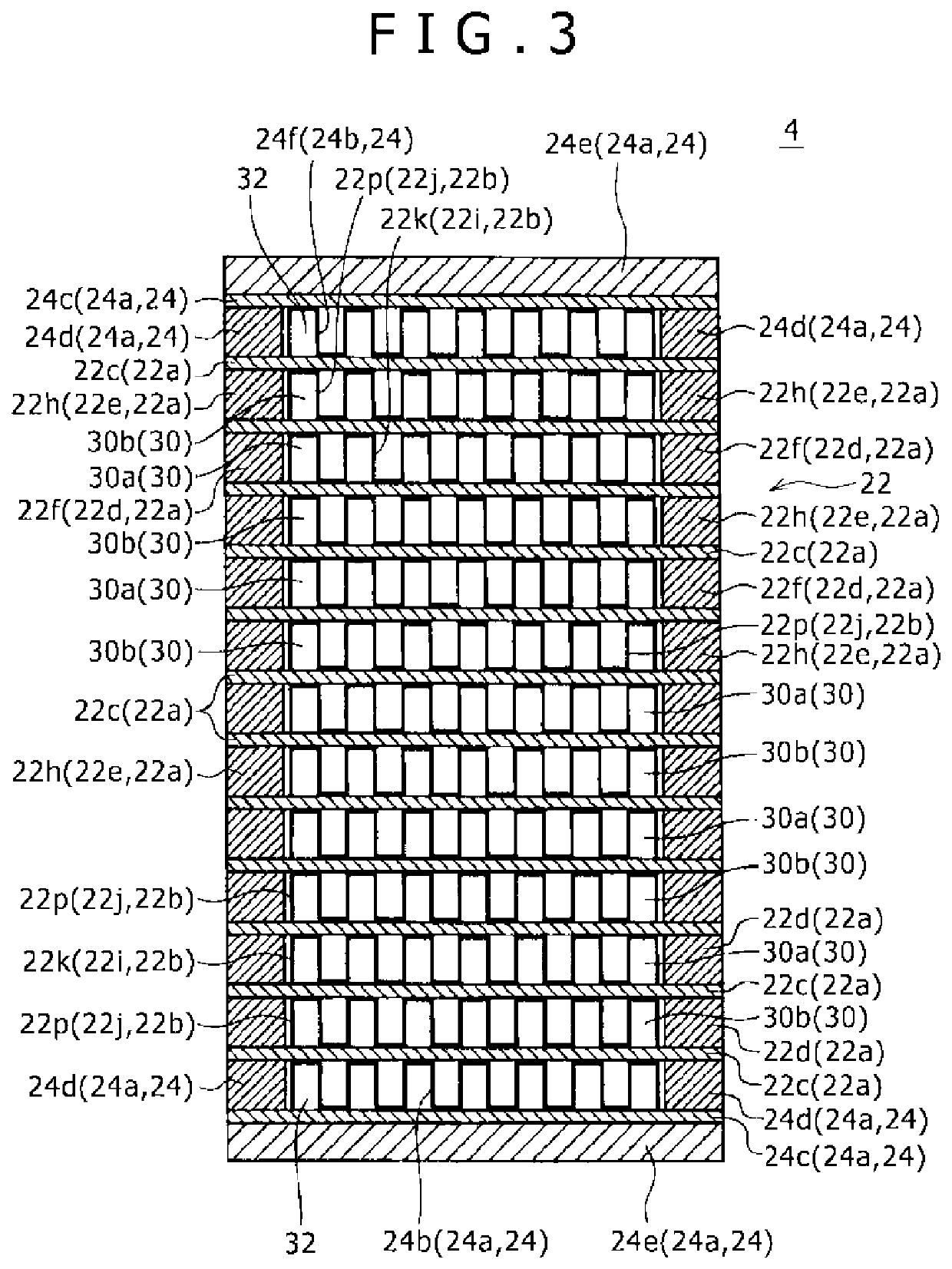Plate fin heat exchanger and repair method for plate fin heat exchanger
a heat exchanger and plate fin technology, applied in indirect heat exchangers, laminated elements, light and heating apparatus, etc., can solve the problems of serious production loss and considerable working time, and achieve the effect of short service life, sufficient pressure resistance performance, and smooth fluid distribution
- Summary
- Abstract
- Description
- Claims
- Application Information
AI Technical Summary
Benefits of technology
Problems solved by technology
Method used
Image
Examples
Embodiment Construction
[0042]Hereinafter, an embodiment of the present invention will be described with reference to the drawings.
[0043]Firstly, with reference to FIGS. 1 to 10, a configuration of a plate fin heat exchanger according to one embodiment of the present invention will be described.
[0044]A plate fin heat exchanger 1 according to the present embodiment (hereinafter, also simply referred to as the “heat exchanger 1”) is a heat exchanger in which heat exchange is performed between a plurality of fluids flowing inside. Specifically, as shown in FIGS. 1 to 3, the plate fin heat exchanger 1 is provided with a heat exchanger main body 4, a first supply header 6, a first collection header 8, a second supply header 10, and a second collection header 12.
[0045]The heat exchanger main body 4 is formed by a heat exchange unit 22 and two protection units 24. In the present embodiment, a material of the heat exchange unit 22 and the protection units 24 is an aluminum alloy.
[0046]The heat exchange unit 22 is ...
PUM
| Property | Measurement | Unit |
|---|---|---|
| time | aaaaa | aaaaa |
| thickness | aaaaa | aaaaa |
| thickness | aaaaa | aaaaa |
Abstract
Description
Claims
Application Information
 Login to View More
Login to View More - R&D
- Intellectual Property
- Life Sciences
- Materials
- Tech Scout
- Unparalleled Data Quality
- Higher Quality Content
- 60% Fewer Hallucinations
Browse by: Latest US Patents, China's latest patents, Technical Efficacy Thesaurus, Application Domain, Technology Topic, Popular Technical Reports.
© 2025 PatSnap. All rights reserved.Legal|Privacy policy|Modern Slavery Act Transparency Statement|Sitemap|About US| Contact US: help@patsnap.com



